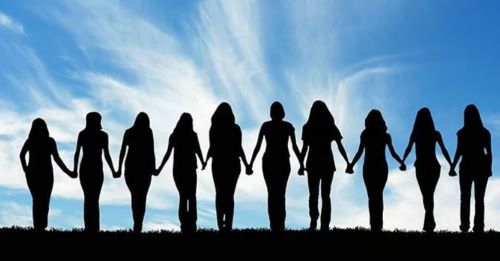Context-
International Women’s Day, celebrated annually on March 8th, serves as a poignant reminder of the global pursuit of gender equality and women's empowerment. In assessing the progress and challenges faced by women, particularly in countries like India, it's essential to look into various dimensions such as education, economic participation, political representation, and societal norms. This provides a comprehensive overview of how women in India have fared in these areas, drawing upon statistical data, social observations, and policy implications.
Educational Empowerment: Bridging the Gender Gap
India's journey towards gender equality in education has witnessed significant strides in recent decades. With inclusive policies aimed at providing free education to all children, regardless of socioeconomic background or gender, India has made remarkable progress in increasing female enrollment in schools. According to the United Nations Development Programme's 'Gender Social Norms Index,' approximately 12 crores (120 million) girls have availed themselves of this opportunity, demonstrating a positive trend towards educational inclusivity.
However, despite advancements at the primary and secondary levels, challenges persist in higher education, particularly in the field of STEM (Science, Technology, Engineering, and Mathematics). While a considerable number of girls opt for arts, sciences, nursing, and medicine at the graduate and postgraduate levels, there remains a noticeable gender disparity in STEM disciplines. Only 20% of students in STEM institutes across the country are females, reflecting systemic barriers and societal biases that hinder women's participation in these fields.
Moreover, the underrepresentation of women among faculty members in premier institutions such as IITs, CSIR labs, AIIMS, IISERs, and IIMs exacerbates the gender gap in STEM education. Addressing this disparity requires concerted efforts to promote gender-sensitive pedagogies, enhance mentorship programs, and provide equitable opportunities for women in academia.
Economic Empowerment: Women Entrepreneurs Driving Innovation;
The entrepreneurial landscape in India has witnessed a notable surge in women-led enterprises, reflecting a shift towards economic empowerment and innovation. While many women entrepreneurs are engaged in sectors such as entertainment, advertising, and beauty products, a significant number with backgrounds in science and technology have established successful ventures in biotechnology and pharmaceuticals.
These women-led enterprises not only contribute to economic growth but also address societal needs through the development of impactful and profitable products. Furthermore, women with medical degrees specializing in critical areas such as ophthalmology, neurology, and pregnancy-related issues play a vital role in providing essential healthcare services to underserved communities.
Despite these achievements, persistent challenges such as access to finance, gender bias in business networks, and societal expectations continue to impede the full realization of women's economic potential. Policymakers must prioritize gender-inclusive policies, enhance access to credit and resources, and foster an enabling environment for women entrepreneurs to thrive.
Political Representation: Breaking Barriers and Shaping Leadership
India's political landscape reflects a noteworthy advancement in gender representation, with women occupying key leadership positions at both the national and regional levels. Notably, India has witnessed two female presidents, Pratibha Patil (2007-2012) and Draupadi Murmu (current president), underscoring the nation's commitment to inclusive governance.
Moreover, women leaders in neighboring countries such as Pakistan, Bangladesh, Nepal, and Tibet further exemplify the regional progress towards gender equality in political leadership. Benazir Bhutto, Sheikh Hasina, Bidya Devi Bhandari, and Dolma Gyari serve as inspirational figures, breaking barriers and shaping policy agendas in their respective nations.
However, despite these achievements, gender biases persist in political institutions, hindering women's full participation and representation. Structural reforms, including quota systems, electoral reforms, and enhanced support for women in politics, are imperative to address these disparities and foster inclusive governance.
Societal Norms and Cultural Shifts
Beyond the realms of education, economics, and politics, women in India contend with deeply entrenched societal norms and cultural attitudes that perpetuate gender inequality. Despite legislative measures and awareness campaigns, issues such as gender-based violence, discriminatory practices, and patriarchal norms continue to undermine women's rights and freedoms.
Efforts to combat these challenges necessitate multifaceted approaches, including legal reforms, community mobilization, and gender sensitization programs. Initiatives such as Beti Bachao, Beti Padhao (Save Daughters, Educate Daughters) and Swachh Bharat Abhiyan (Clean India Mission) exemplify the government's commitment to address gender disparities and promote women's empowerment.
Furthermore, civil society organizations, grassroots movements, and advocacy groups play a crucial role in challenging traditional norms and advocating for gender equality. By fostering dialogue, raising awareness, and mobilizing support, these initiatives contribute to broader societal shifts towards gender-inclusive norms and practices.
Conclusion
In conclusion, the status of women in India reflects a complex tapestry of progress and challenges across various domains. While strides have been made in education, economics, and political representation, significant gender disparities persist, necessitating sustained efforts towards systemic change and societal transformation.
By addressing structural barriers, challenging discriminatory norms, and promoting gender-sensitive policies, India can realize its vision of a truly inclusive society where women are empowered to fulfill their potential and contribute meaningfully to nation-building. As we celebrate International Women’s Day and beyond, let us reaffirm our commitment to gender equality and collective action towards a more equitable and inclusive future for all.
|
Probable Questions for UPSC Mains Exam: 1. Analyze the progress and challenges faced by women in India in the realms of education, economic participation, and political representation, highlighting key initiatives and persistent disparities. (10 Marks, 150 Words) 2. Discuss the role of societal norms and cultural shifts in perpetuating gender inequality in India, and examine the effectiveness of government initiatives and civil society efforts in promoting women's empowerment and combating discriminatory practices. (15 Marks, 250 Words) |
Source- The Hindu







